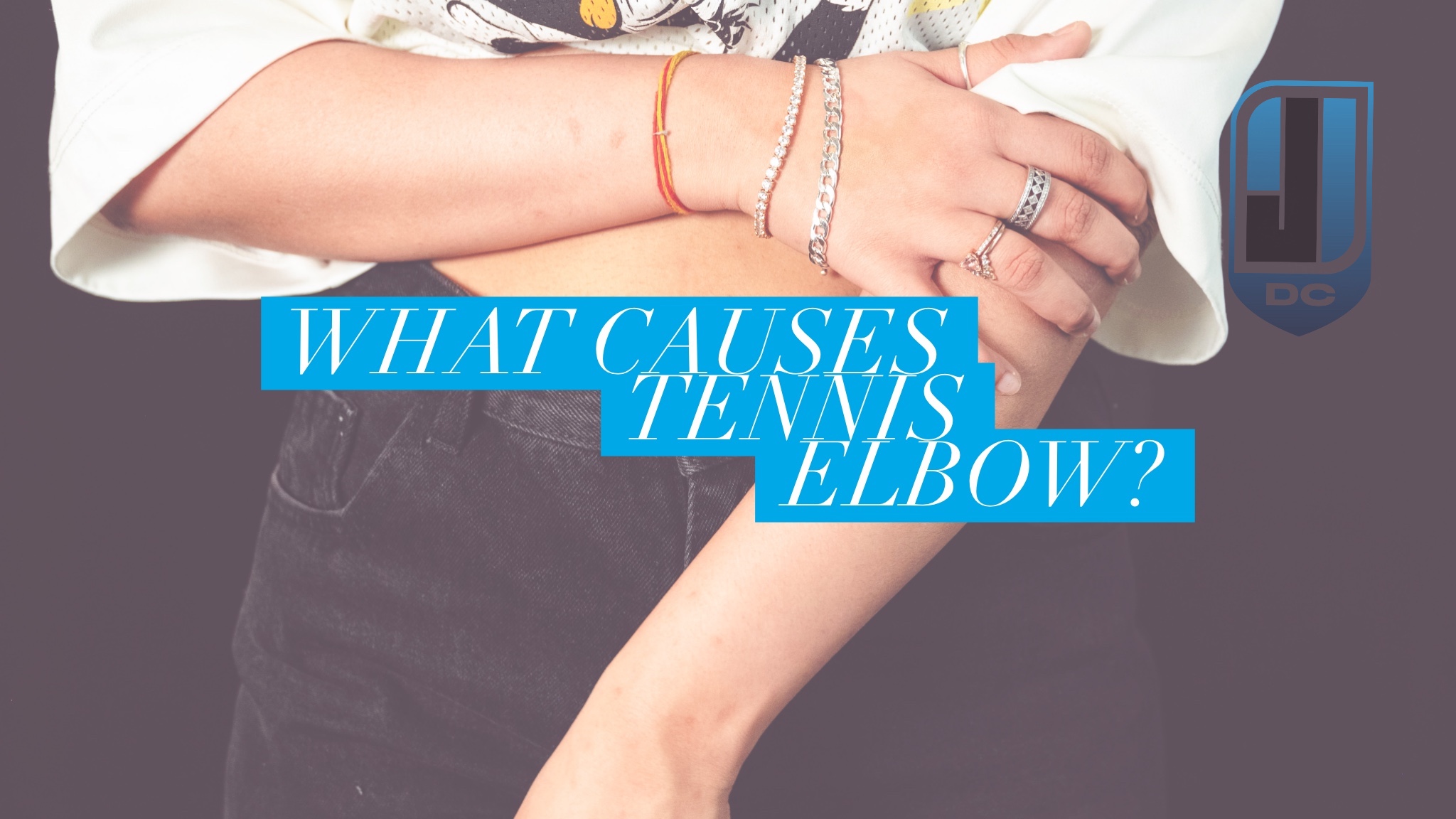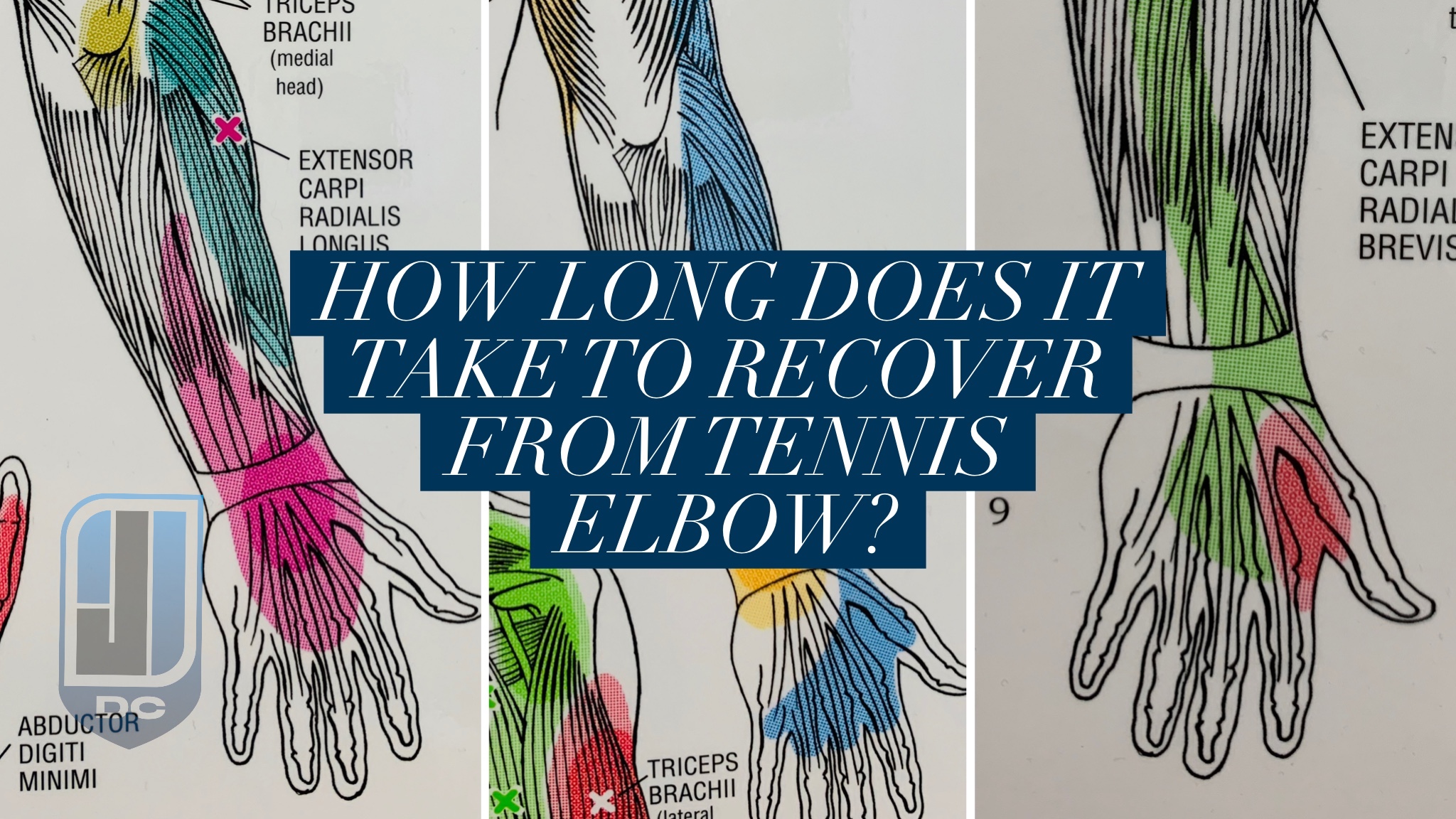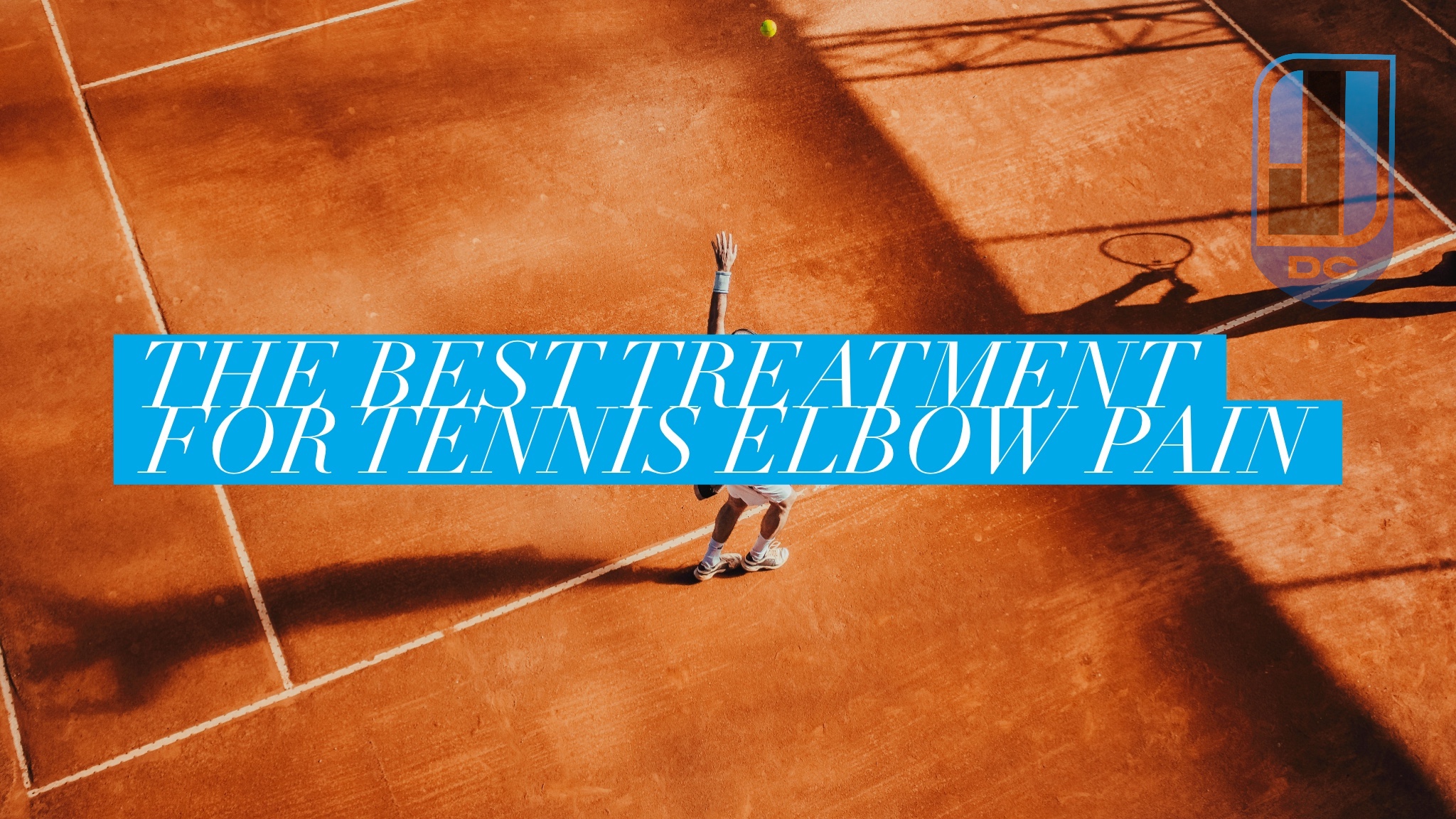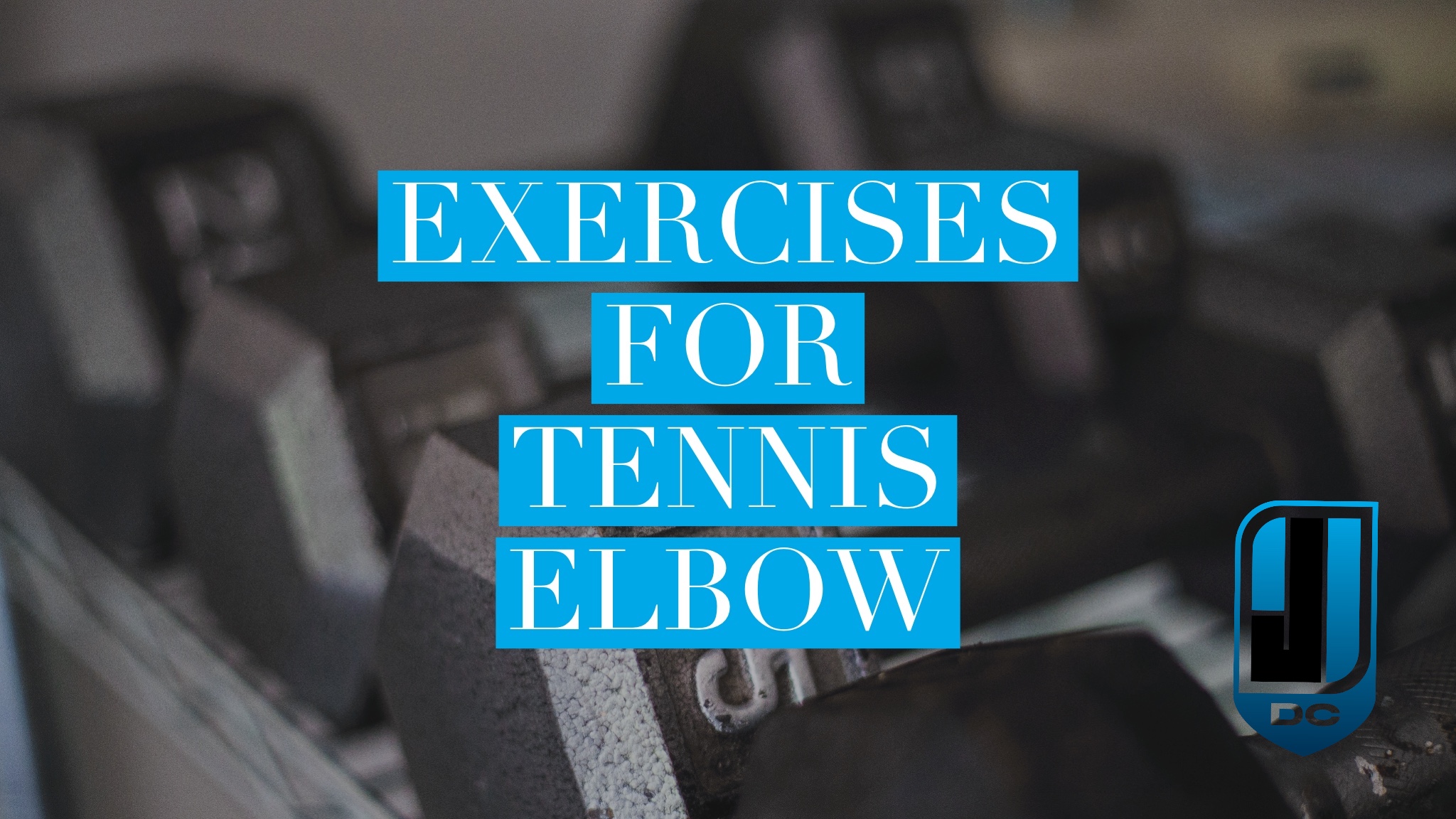Using a brace for tennis elbow can help relieve pain and improve elbow movement. There are a lot of braces available online for this condition, and it can be difficult to figure which one may be the most helpful. I’m going to review the different braces you can try and show you what I typically recommend for my patients.
A painful tennis elbow condition can really limit how you move your elbow. This makes activities like typing, using a mouse, swinging tools, driving, or even twisting a door handle difficult. Unfortunately, these are things you often can’t avoid completely. The good thing is by using a brace you can make these activities more comfortable.
Remember, using a brace is only one thing you can do to speed up tennis elbow recovery. There are plenty of other things you can do at home (like exercises and self-massage.) A rehab-focused chiropractor can also provide a lot of evidence-based treatments to help you recover quickly.
Make sure you check out my other posts where I answer all your questions about tennis elbow. Stay positive and know that the majority of these cases will resolve with the right treatments!
- How to know if you have tennis elbow?
- Where is tennis elbow pain?
- Can you have tennis elbow if you don’t play tennis?
- What movements cause tennis elbow?
- Is tennis elbow an overuse injury?
- How long does it take to recover from tennis elbow?
- Which muscles are damaged in tennis elbow?
- What causes tennis elbow pain?
- Elbow conditions similar to tennis elbow
The Three Types of Braces for Tennis Elbow
There are generally three types of braces that people use to relieve tennis elbow pain. If you’ve tried one of these types and it hasn’t relieved your pain, it may be worth trying another. The three types of tennis elbow brace are:
- Counterforce Brace: These function like a rubber band for your forearm. You strap them around your forearm just below your elbow. Typically they have a small pad on them to be placed on the outside of your elbow an inch or two below the most painful spot.
- Elbow Sleeve Brace: These braces are a compressive sleeve that you can slip over your elbow. They typically cover the lower upper arm and the upper lower arm and provide some compressive support to the area. You can still move your elbow, but the brace will provide pressure over the area.
- Wrist Stabilizing Brace: A brace of this type actually goes around your wrist and limits how much you can move your wrist. The goal with these braces is to restrict rich movement to keep you from contracting or stretching the painful muscles of your forearm. They usually have a hard piece on the palm-side of the brace.
The Most Effective Brace for Tennis Elbow
Now that you’re familiar with the three types of tennis elbow braces, I’ll give you my opinion on which one is the best.
Counterforce braces are what I recommend to patients who I treat for tennis elbow. These braces work by creating a new anchor point for the extensor muscles in the forearm. In other words, they put the strain on the muscle in a different spot besides the painful spot. By doing this, your extensive muscles don’t continuously pull and disrupt the healing happening in the muscle tendon. By changing the anchor point, it gives the extensor muscles a better chance to heal without interruption.
- Stretches for tennis elbow
- Strengthening exercises for tennis elbow
- Dynamic wrist strengthening exercise
- The best exercises for tennis elbow
How to Use a Counterforce Brace for Tennis Elbow
I recommend my patients use a counterforce brace with the pad placed on the outside/back portion of their forearm. Typically, you want that pad 2-3 finger widths below the most painful spot in your elbow. If it’s too close to the origin of pain, it may actually irritate the elbow more, so the location is important.
Counterforce braces for tennis elbow aren’t supposed to be worn 100% of the day. I always make sure my patients are removing it periodically so they’re not restricting blood flow and letting the area breathe. It’s important not to strap it too tight, it should be tight enough to stay in place but not so tight it restricts blood flow.
Wearing it during the day during painful activities is the most important time to wear the brace. That’s when having a new anchor point in the muscle can prevent the healing from being interrupted.
Sometimes patients ask me whether they should wear a tennis elbow brace at night. That really depends on how the wrist and elbow are positioned or how much they move these areas at night. Wearing a counterforce brace at night may be helpful for some, but it’s probably not the most important time to wear it. I usually have them try it and see if it helps.

Jason Williams DC is a licensed Doctor of Chiropractic with Physical Therapy Modality and Acupuncture privileges. He is a chiropractor in Dumfries, VA at Sentara Therapy Center. Dr. Williams’ clinical expertise is in the evaluation, treatment, and rehabilitation of neuro-musculoskeletal conditions. Specific focuses include spinal, extremity, and sports-related complaints. He brings a patient-first attitude to his treatments and is a proponent of evidence-based and integrative care. See more content and his contact info here.
The opinions and views are mine personally, and do not necessarily reflect the views of others in the profession, my employer, or organizations that I belong to.





